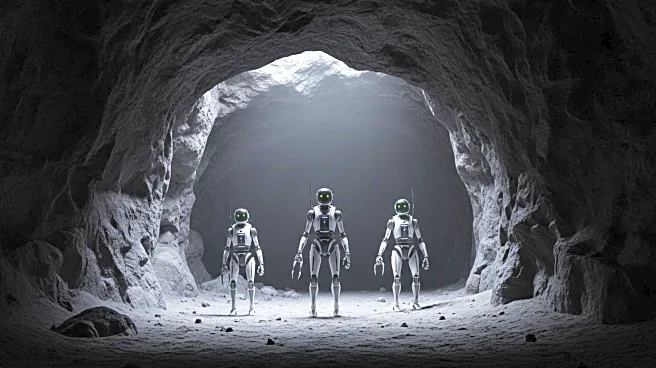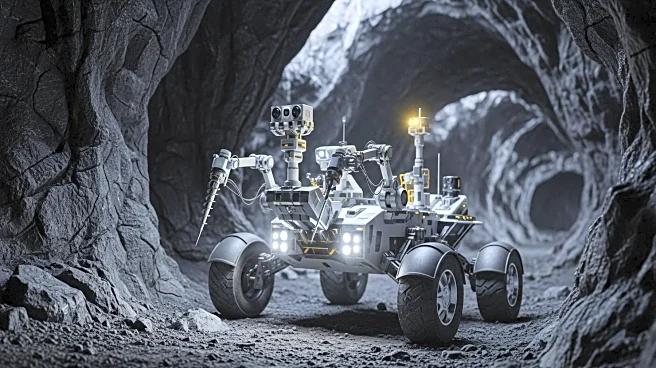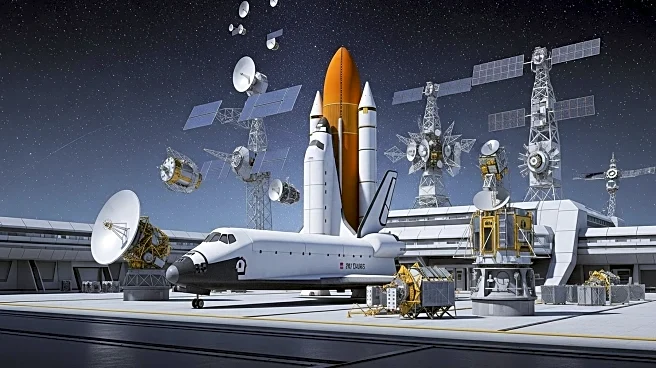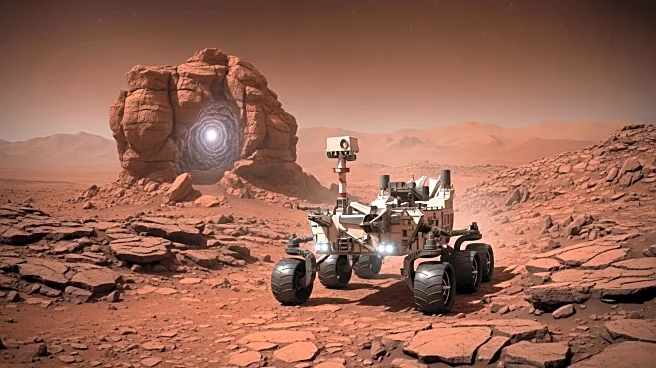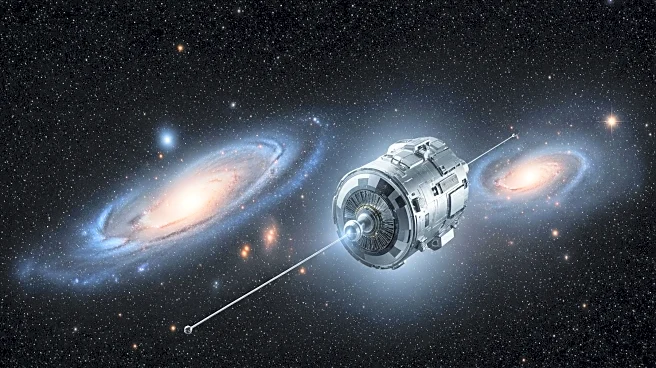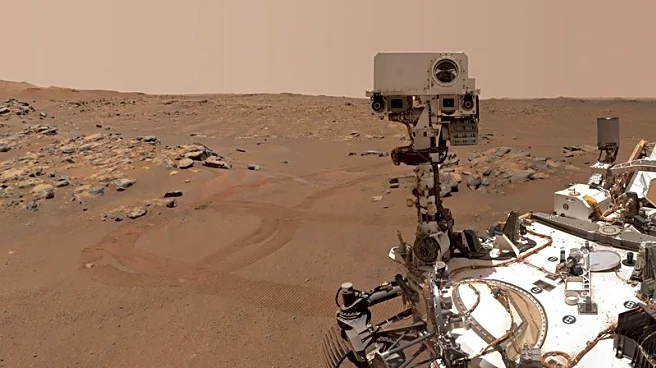What's Happening?
A team of European researchers has developed a trio of robots designed to explore lunar caves, which could provide protection for astronauts from the Moon's harsh environment. The Moon presents extreme temperature fluctuations and is bombarded by micrometeorites due to its lack of atmosphere. These conditions necessitate protective measures for astronauts. The robots, tested on Lanzarote Island, Spain, include SherpaTT, a hybrid wheeled and legged robot; Coyote III, a small, mobile rover; and LUVMI-X, a lightweight mapping rover. The robots work in phases to map and explore lunar lava tubes, which are seen as potential safe havens for astronauts. The research, published in Science Robotics, highlights the importance of these caves for scientific research and space exploration.
Why It's Important?
The exploration of lunar caves is crucial for future space missions, as these structures could offer natural protection against radiation and micrometeorites. This development is significant for the safety and sustainability of human activities on the Moon. The robots' ability to autonomously explore and map these caves could lead to the establishment of bases within them, providing a safer environment for astronauts. This research also has implications for Mars exploration, where similar lava tubes exist. The success of these robotic missions could pave the way for more cost-effective and safer exploration of extraterrestrial environments, potentially accelerating human presence on other planetary bodies.
What's Next?
Further research and testing are needed to refine the robots' capabilities and adapt them for real planetary exploration scenarios. The team aims to improve the robots' performance in various terrains and conditions. As the technology advances, these robots could be deployed in actual lunar missions, contributing to the establishment of permanent human bases on the Moon. The exploration of Martian lava tubes could also benefit from this research, offering insights into the planet's geology and potential astrobiological significance.
Beyond the Headlines
The use of autonomous robots for exploring extraterrestrial environments raises ethical and logistical questions about the role of humans in space exploration. While robots can perform tasks in hazardous conditions, the human element remains crucial for decision-making and adaptability. The balance between robotic and human exploration will continue to evolve as technology advances.
